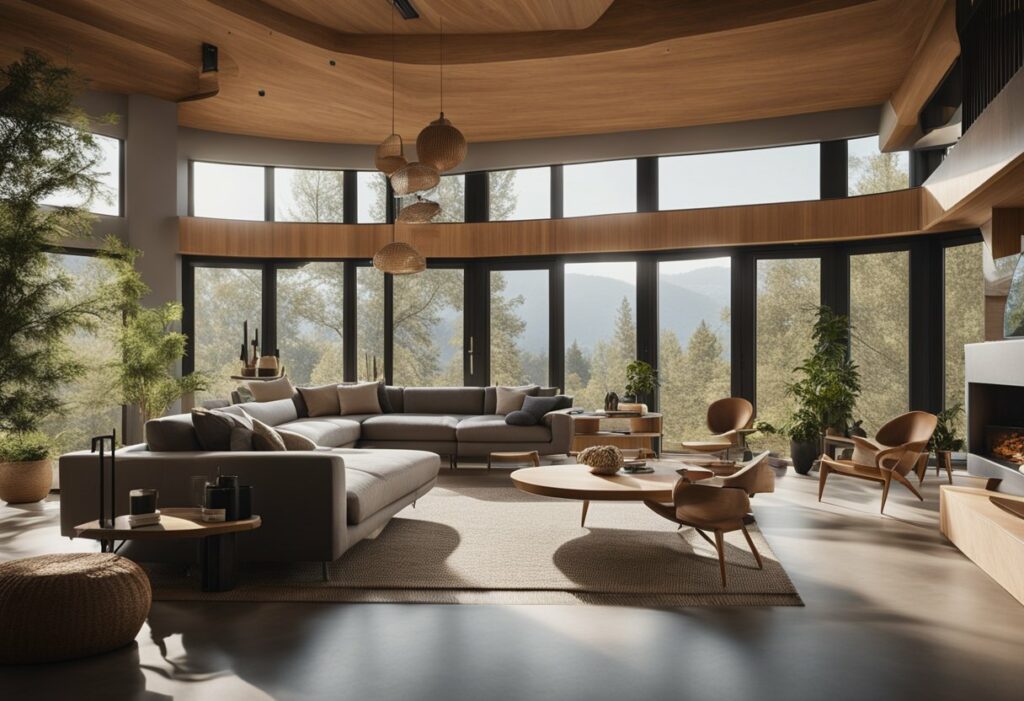Frank Lloyd Wright Interior Design: Exploring the Iconic Architect’s Style
If you’re a fan of architecture, you’ve probably heard of Frank Lloyd Wright, the American architect who is considered a genius in his field. Wright was known for his innovative designs, which often incorporated elements of nature and emphasized simplicity and functionality. But did you know that Wright was also a master of interior design? In this article, we’ll explore the foundations of Wright’s aesthetic and take a closer look at some of his most iconic interior designs.
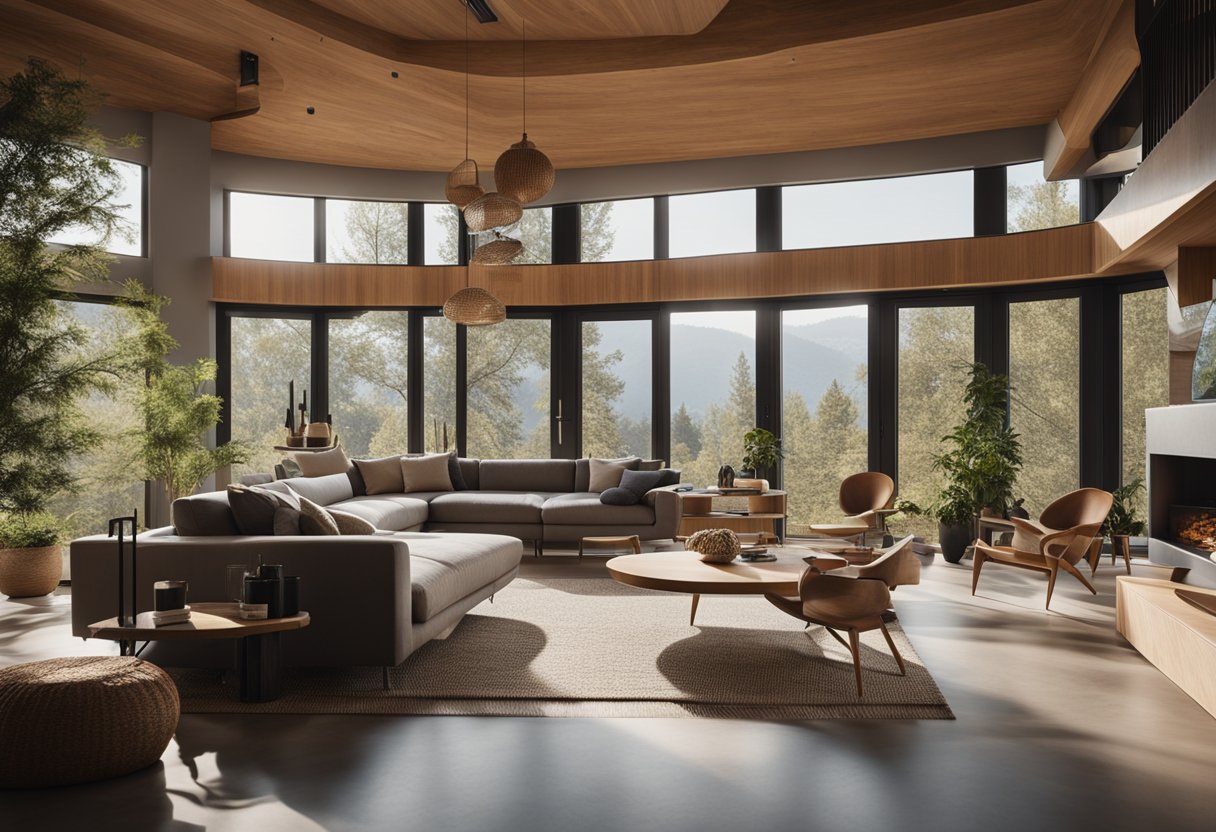
Wright’s career spanned several decades, and during that time he designed everything from homes to public buildings to furniture. His approach to interior design was closely tied to his overall philosophy of architecture, which emphasized the importance of creating spaces that were both beautiful and functional. Wright believed that the design of a space should be closely tied to its purpose, and that every element of a room should work together to create a cohesive whole.
Despite the fact that Wright’s career began over a century ago, his designs remain as relevant and influential as ever. His use of natural materials, clean lines, and open spaces has been emulated by countless architects and designers over the years, and his impact on the world of interior design can still be felt today. So let’s take a closer look at some of his most iconic designs and explore the lasting impact of his work.
Key Takeaways
- Frank Lloyd Wright was not only a master of architecture, but also a pioneer in the field of interior design.
- Wright’s approach to interior design emphasized the importance of creating spaces that were both beautiful and functional, with every element working together to create a cohesive whole.
- Wright’s designs remain as relevant and influential today as they were over a century ago, and his impact on the world of interior design can still be felt today.
Foundations of Wright’s Aesthetic
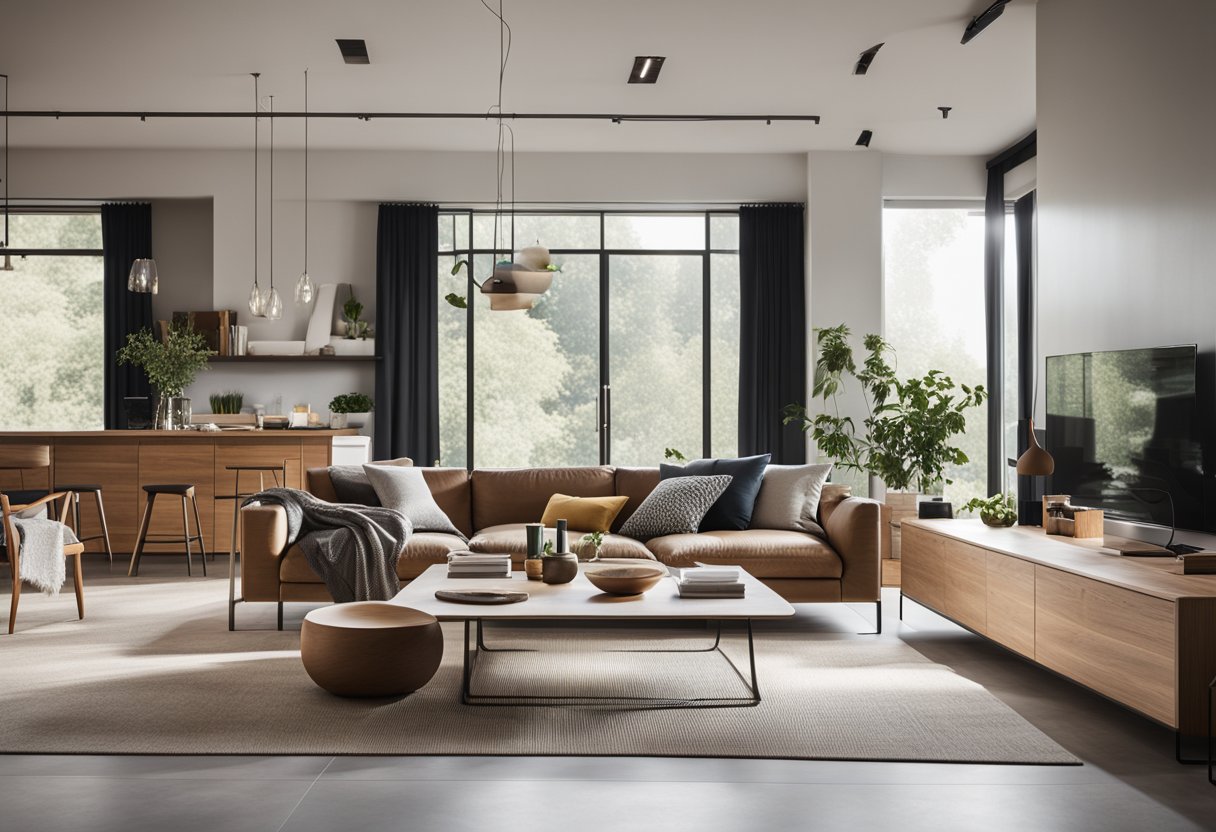
If you’re interested in interior design, you’ve probably heard of Frank Lloyd Wright. He was an American architect who created some of the most iconic buildings of the 20th century. But did you know that he was also a master of interior design? In this section, we’ll explore the foundations of Wright’s aesthetic and how it influenced his approach to interior design.
Organic Architecture Principles
One of the key principles of Wright’s aesthetic was organic architecture. This approach emphasised the importance of designing buildings that were in harmony with their natural surroundings. Wright believed that architecture should be an extension of nature, rather than a separate entity. This meant that he often used natural materials like wood and stone in his designs, and incorporated elements like water and greenery into his buildings.
Harmony with Nature
Another important aspect of Wright’s aesthetic was harmony. He believed that buildings should be designed to blend seamlessly with their surroundings, creating a sense of unity and beauty. This meant that he often used natural colours and textures in his interior designs, and incorporated elements like natural light and views of the outdoors.
Use of Natural Materials
Wright’s use of natural materials was a key part of his aesthetic. He believed that natural materials like wood and stone had a beauty and character that couldn’t be replicated by man-made materials. This meant that he often used these materials in his interior designs, creating spaces that felt warm, inviting, and connected to nature.
In summary, Wright’s aesthetic was grounded in the principles of organic architecture, harmony with nature, and the use of natural materials. By incorporating these elements into his interior designs, he created spaces that were not only beautiful, but also deeply connected to the natural world.
Iconic Interior Designs and Their Impact
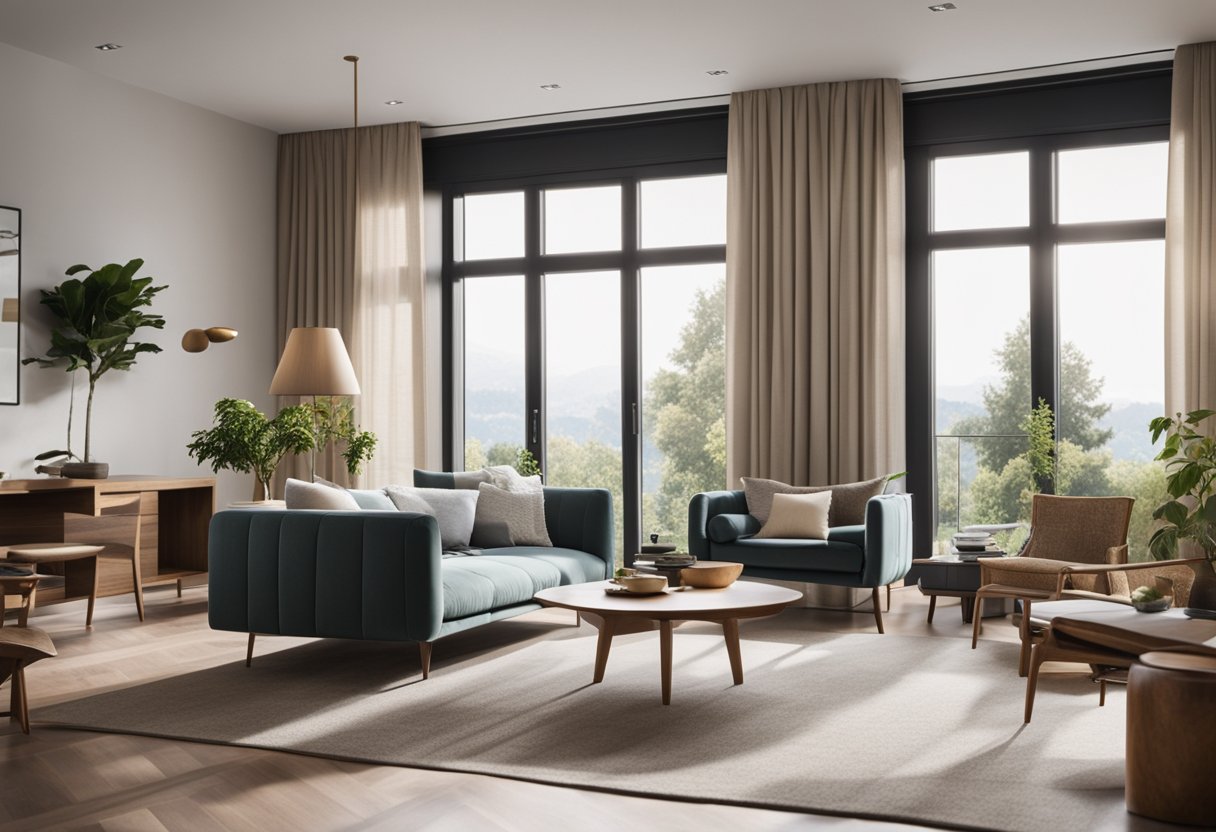
Frank Lloyd Wright’s interior design philosophy is characterised by a harmonious blend of functionality and beauty that is evident in his iconic interior designs. Here are three of Wright’s most famous interior designs that showcase his style and philosophy.
Fallingwater: Integrating Interior and Exterior
Fallingwater, one of Wright’s most famous designs, is a masterpiece of interior design that showcases his philosophy of integrating interior and exterior spaces. The living room is a prime example of this philosophy, with its fireplace and built-in furnishings that blend seamlessly with the natural environment. The cantilevered terraces also provide an excellent example of Wright’s use of natural light and the environment to create functional spaces that are also aesthetically pleasing.
Usonian Homes: Functionality and Beauty
Wright’s Usonian homes are another example of his philosophy of blending functionality and beauty. These homes were designed to be affordable and efficient, yet they still managed to incorporate sophisticated design elements such as art glass and skylights. The living room in a Usonian home is often the centrepiece, with its attention to detail and use of natural materials and textures.
Taliesin West: Desert Living Masterpiece
Taliesin West is a masterpiece of interior design that showcases Wright’s ability to create functional spaces that are also aesthetically pleasing. The living room is a prime example of this, with its use of natural light and the environment to create a space that is both functional and beautiful. The prairie style furniture and built-in furnishings also provide an excellent example of Wright’s attention to detail and his use of patterns and lighting to create a sophisticated interior space.
Overall, Frank Lloyd Wright’s interior designs were characterised by a harmonious blend of functionality and beauty that is evident in his iconic designs such as Fallingwater, Usonian homes, and Taliesin West. Whether it was his use of natural light, fireplaces, furniture, or built-in furnishings, Wright’s attention to detail and his ability to create functional spaces that were also aesthetically pleasing have made his interior designs a national historic landmark.
Frequently Asked Questions
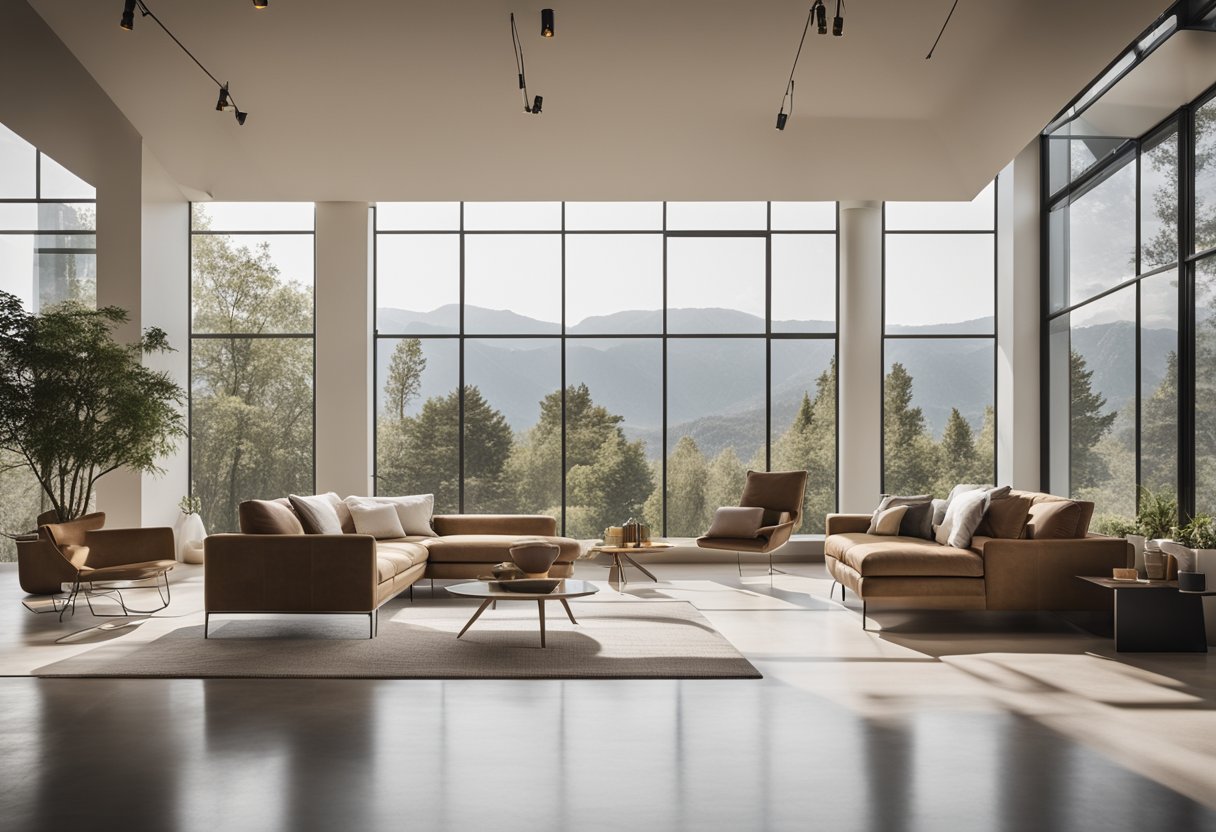
How do Frank Lloyd Wright’s design principles shape modern interiors?
Frank Lloyd Wright’s design principles continue to influence modern interiors. His emphasis on simplicity, natural materials, and clean lines is evident in contemporary design. Wright believed in designing from the inside out, creating spaces that were both functional and beautiful. He also believed in using local materials and incorporating the natural surroundings into the design. These principles are still relevant today and can be seen in many modern interiors.
What are the distinguishing features of Frank Lloyd Wright-designed furniture?
Frank Lloyd Wright-designed furniture is known for its clean lines, simple forms, and use of natural materials. Wright believed that furniture should be an extension of the architecture, and he often designed pieces specifically for his buildings. His furniture designs were intended to be functional, comfortable, and beautiful. Many of his pieces are still in production today and are highly sought after by collectors.
In what ways did Frank Lloyd Wright’s architecture influence his interior designs?
Frank Lloyd Wright’s architecture and interior designs were closely intertwined. He believed that the interior and exterior of a building should be in harmony and that the design should be holistic. Wright’s use of natural materials, clean lines, and open spaces in his architecture is reflected in his interior designs. He also believed in designing for the specific needs of the occupants, creating spaces that were both functional and beautiful.
How can one incorporate Frank Lloyd Wright’s style into a contemporary home?
One way to incorporate Frank Lloyd Wright’s style into a contemporary home is to focus on clean lines, natural materials, and simplicity. Choose furniture and accessories that are functional and beautiful, and that reflect the natural surroundings. Use local materials whenever possible and incorporate elements of nature into the design. Pay attention to the details, such as lighting and colour, and aim for a cohesive look throughout the space.
What are the hallmarks of Frank Lloyd Wright’s residential architecture?
Frank Lloyd Wright’s residential architecture is known for its use of natural materials, clean lines, and open spaces. He believed in designing for the specific needs of the occupants, creating spaces that were both functional and beautiful. Wright’s architecture often incorporated elements of nature, such as natural light and views of the surrounding landscape. His designs were also known for their attention to detail and craftsmanship.
How does Frank Lloyd Wright’s design philosophy manifest in his architectural interiors?
Frank Lloyd Wright’s design philosophy is evident in his architectural interiors. He believed in creating spaces that were both functional and beautiful, and that reflected the natural surroundings. Wright’s use of natural materials, clean lines, and open spaces is reflected in his interior designs. He also believed in designing for the specific needs of the occupants, and his interiors often incorporated elements of nature, such as natural light and views of the surrounding landscape.

